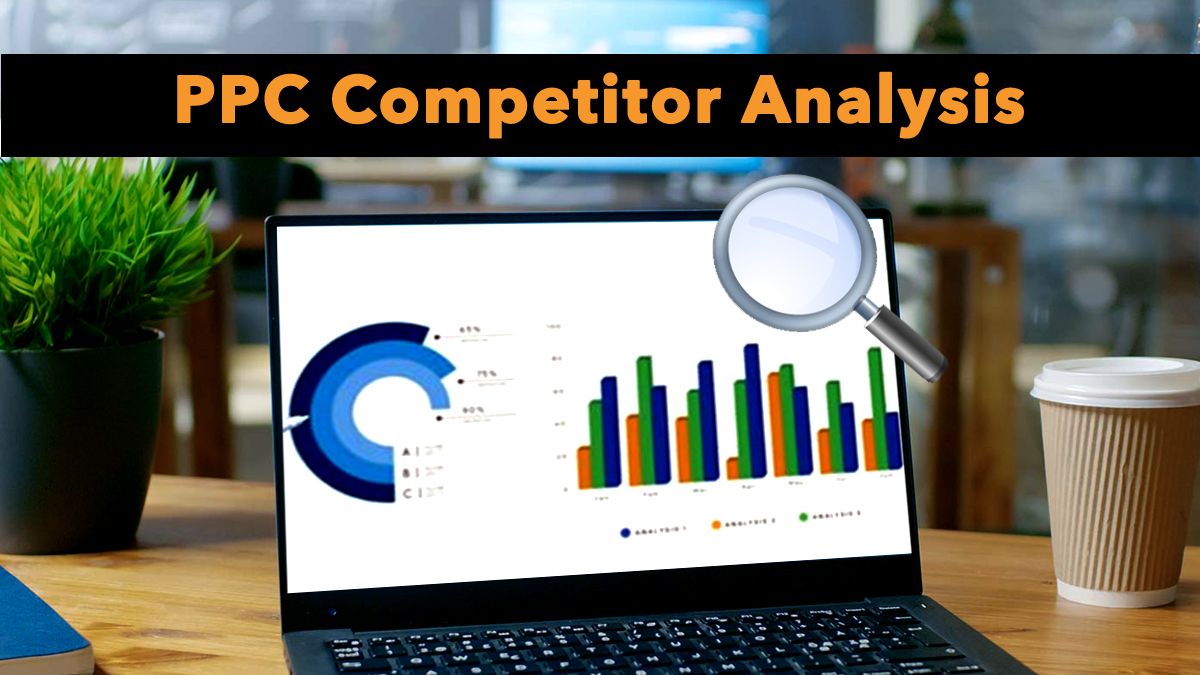Understanding the significance of PPC (pay-per-click) ads is crucial for standing out on search engines. PPC campaigns can increase the likelihood of visitors making a purchase by 50% compared to organic visitors. Moreover, the strategies and bidding of rival companies can significantly impact both the cost and visibility of your ads.
Monitoring your PPC competitors by analyzing their strategies, akin to SEO competitor analysis, is essential. In this post, we provide comprehensive guidance on effective PPC competitor analysis.
What is PPC Competitor Analysis?
PPC competitor analysis involves studying and understanding how other companies use pay-per-click advertising online. This process enables you to learn from competitors and enhance your own advertising strategy.
Analyzing the competition offers insights into the PPC landscape before diving in. It helps identify key competitors for your targeted keywords, understand the competitiveness for ad placement, manage costs, and refine your ad budget, content, and strategy. You might want to discuss PPC competitor analysis with your PPC services provider for improved results.
Importance of PPC Competitor Analysis
Conducting a PPC competitor analysis is critical when creating your strategy and setting up a new PPC account. It allows you to identify effective tactics, uncover new opportunities for success, and make informed decisions for your campaign. This approach can significantly reduce guesswork and accelerate results.
However, competitor analysis shouldn’t be a one-time activity. Continuous assessment, especially during ongoing optimization processes like Google Ads improvements, is vital. Regularly comparing your results with your major competitors helps gauge your campaign’s effectiveness and informs necessary adjustments.
Understand Your PPC Ad Performance
Examining your rivals’ strategies is key to understanding the performance of your own campaigns. The actions of your competitors can directly impact your results. Being aware of their tactics is crucial for growing and advancing your accounts.
For example, analyzing competitor strategies can shed light on rising customer acquisition costs, diminishing ad visibility, and reasons why non-target audiences may be clicking on your ads.
Also Read: Mastering the 7 Essential Attributes of a Good Landing Page
Can Monitor Landscape Changes
Digital marketing is a dynamic field, and PPC marketing is like a constantly evolving race. Keeping abreast of your competition helps you stay informed about industry trends, shifts in competition, and the latest popular keywords and topics.
Identifying new competitors and tracking the increasing prominence of others is essential. In PPC, it’s not just industry peers you’re up against in auctions; you’re also contending with giants like Walmart and Amazon. Therefore, finding innovative strategies to maintain successful PPC campaigns is imperative.
How to Do PPC Competitor Analysis?
Use “Details” in Microsoft and Google Ads to Find Out Your Competitors
Often, your online competitors differ from your physical business rivals. It’s beneficial to identify who is bidding on the same keywords as you when beginning your analysis.
The “Details” section in the dropdown menus of Microsoft and Google Ads offers valuable insights, particularly in “Auction Insights”. Key metrics to consider include:
Impression share: This shows how often your ads are displayed compared to those of your competitors, indicating your ad’s visibility.
Overlap rate: The frequency at which your and a competitor’s ads are seen simultaneously.
Position above rate: How often a competitor’s ad appears in a higher position than yours when displayed together.
Top of the page rate: The frequency of your competitor’s ad appearing at the top of the search page.
Outranking share: The rate at which your ad is shown before a competitor’s in the auction.
You can identify your competitors through the Google Ads UI or tools like Semrush or SpyFu. These platforms provide valuable data, including:
- Cost per click
- Ad copy
- Paid keywords
- Keyword overlap
- Recommended buys
- Ad budget
Visually Illustrate Your Competitor Metrics
Visualization tools can create graphs to display your competitors’ metrics, including cost-per-click (CPC) data. This visual representation helps pinpoint areas needing improvement.
You may notice rising CPCs for certain keywords or emerging popularity for new terms. Such insights can inform your broader marketing strategy beyond just search engine advertising. For instance, if keywords become too expensive, content marketing can be used to target those areas more cost-effectively.
In times of economic downturns, natural disasters, or significant industry shifts, a holistic approach is beneficial. Don’t just focus on raw data; use tools like Looker Studio, pivot tables, or graphs to identify and present patterns and trends.
Categorize Your Competitors
Competitors vary significantly. Some have substantial advertising budgets, while others struggle for visibility. And some compete with you only on specific search terms.
Differentiating between major threats and minor competitors is crucial for effective strategy development. Various types of competitors in PPC advertising include:
- Affiliates
- Online Travel Agency
- Comparison Shopping Engine
- Search arbitrage
- Marketing partners
- No trademark
- Reseller
Competing against unauthorized trademark users can be challenging. If someone uses your brand name in ads without permission, report it to Google’s trademark policy channels.
Tools like Semrush are useful for monitoring keywords related to your products and keeping tabs on your competitors’ keyword strategies. Comparing your website’s activities with those of a competitor can also yield valuable insights.
Where Competitors Compete With You?
It’s impractical to track every ad position and impression share across your entire account. Focus your analysis on key performance indicators (KPIs) to identify areas for PPC improvement. Here are simple methods to identify your competitors:
Tag your best keywords: Use labels on your prime keywords in bidding tools to monitor significant shifts. These can alert you to attempts by competitors to gain an edge. Utilize this data to identify disparities and implement necessary adjustments.
Create alerts, reports, and automatic bidding rules: Create these for your top campaigns, ad groups, and keywords. Also, arrange for automated Search Impression Share (SIS) reports to be sent to your email. Tools like Microsoft Advertising’s automated rules can prevent keywords from shifting out of desired positions.
Why Are Competitors Competing?
After identifying your PPC competitors, the next step is to understand their motivations. Occasionally, a competitor might outbid you on keywords to impede your success.
However, typically, your competitors are pursuing similar objectives as yours. This means that merely bidding higher may not guarantee victory. Therefore, it’s essential to analyze your competitors’ tactics and formulate your strategy accordingly.
The motive behind selecting specific keywords can vary based on the type of competition in online advertising. For example, the most direct form of competition involves businesses vying to increase their revenue.
Some competitors, such as affiliates or partners of your clients, may engage in advertising to earn revenue, impacting the visibility of your client’s ads. Their profit margins are usually lower, allowing them to bid less for clicks.
Others may attempt to redirect traffic from one brand to another. Certain companies might bid higher on the same keywords as your client to intensify competition. However, it’s crucial to recognize that mere bidding is not always sufficient to surpass your client’s rivals.
Utilize competitor analysis tools to gain additional insights into your competitors. They might share similar goals, so it’s important to consider factors beyond their pricing. Subsequently, you can modify your strategy as needed.
This could involve adjusting bids, or it might prompt your company to focus more on other aspects influencing the Google Ads system, such as enhancing ad click-through rates, increasing website engagement, and more.
10 Best PPC Competitor Analysis Tools
Semrush

Semrush facilitates the organization, analysis, and enhancement of your client’s Google Ads. It offers tools for advertising research, keyword discovery for ads, tracking search rankings, and managing social media ad campaigns.
Visit a website and Semrush will reveal insights about your client’s main competitors, including their top keywords and more. It also provides estimates of competitors’ spending, though these may not always be entirely accurate.
SpyFu
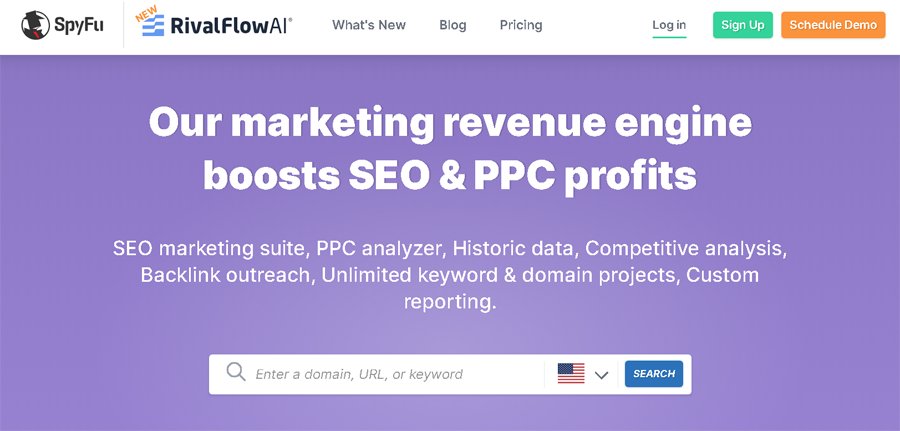
pyFu offers valuable tools that make it easy to monitor your competitors’ PPC advertising strategies. It simplifies the process of setting up your PPC account by allowing you to emulate successful campaigns from your competitors. With SpyFu, you can identify the most effective keywords and ads utilized by your competitors in both their website and paid search efforts.
By entering a competitor’s website address, you can access data on their Google Ads expenditure, click-through rates, and the number of keywords they are bidding on. The “Ad History” tab reveals their search or display ads from the past five months, providing a comprehensive view of all the keywords they use, conveniently categorized by topic.
Also Read: What is Google Ad Rank and How to Improve it?
Meta Ad Library
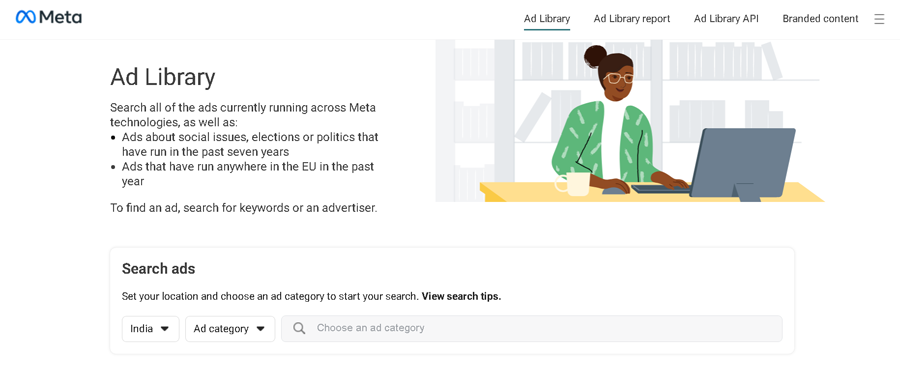
The Meta Ad Library offers transparency in advertising by allowing users to view current social media ads and identify the advertisers behind them. This initiative by the platform aims to promote openness about ad usage. Users can search for an advertiser’s name to see all the ads they have run on Facebook.
With Google commanding nearly 40% of the PPC advertising market, many competitor analysis tools are geared towards Google Ads. However, the Meta Ad Library stands out as a useful and free resource for digital marketers to investigate their competitors’ Meta advertising strategies.
Brandverity
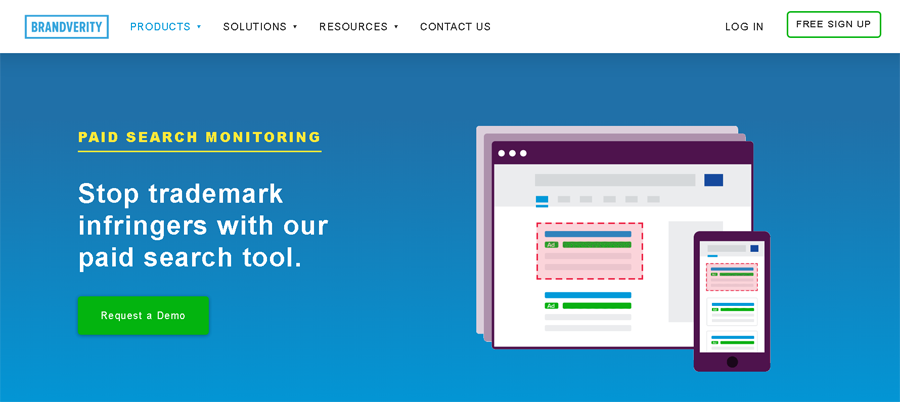
BrandVerity assists businesses in analyzing their online advertising competition, providing critical insights to enhance their advertising strategies. It monitors competitors’ ads, uncovering key details about ad placement, keyword usage, and messaging.
This tool enables companies to keep track of their competitors’ advertising activities, discover opportunities for improvement, and optimize their PPC campaigns. BrandVerity ensures that ads comply with regulations, maintain brand integrity, and contribute to the effectiveness of PPC campaigns.
By using BrandVerity, businesses can identify their online competitors, leading to informed decisions and a competitive edge in online advertising. It’s an excellent tool for monitoring, identifying, and mitigating the impact of undesirable ads on your most prominent keywords.
iSpionage
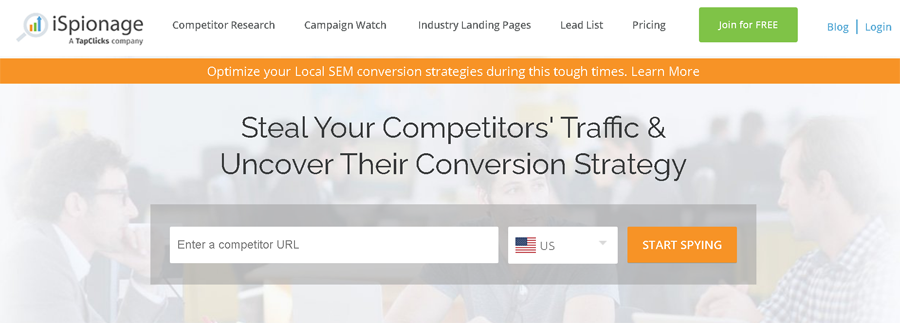
iSpionage is an excellent tool for competitor analysis, boasting features that aid digital marketers in better understanding their campaigns. This tool allows you to track the keywords your competitors have used in their online ads and SEO strategies for up to 7 years.
iSpionage has developed metrics such as the Ad Effectiveness Index (AEI) and the Keyword Effectiveness Index (KEI) to gauge competitor ad performance. It offers unlimited research capabilities for subscription users, enabling in-depth competitor analysis in digital marketing.
Ahrefs
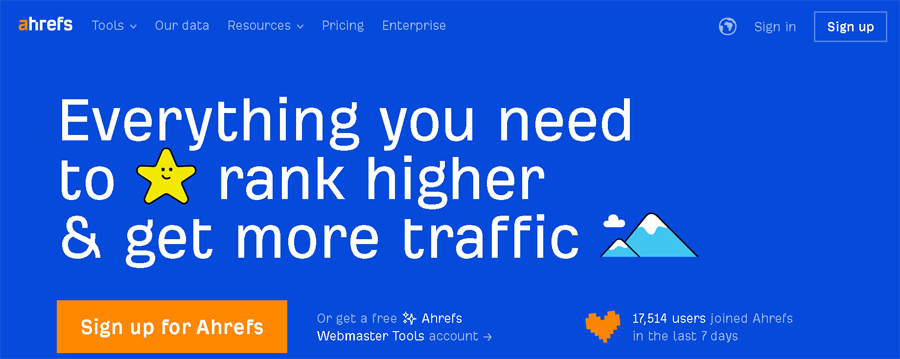
Ahrefs is a versatile platform offering tools for link building, keyword research, competitor analysis, search ranking monitoring, and website auditing. The keyword explorer tool helps identify a wide range of keywords and assess their competitiveness.
The site explorer tool examines direct website traffic, backlink profiles, and ad-driven visits. Ahrefs also estimates potential traffic and provides key metrics like global search volume, regional interest, and average click rates.
Ahrefs is beneficial for optimizing Google Ads by identifying underperforming keywords, and ensuring efficient use of your client’s budget. AgencyAnalytics features five specialized Ahrefs dashboards for tracking real-time updates through a user-friendly interface.
BuiltWith
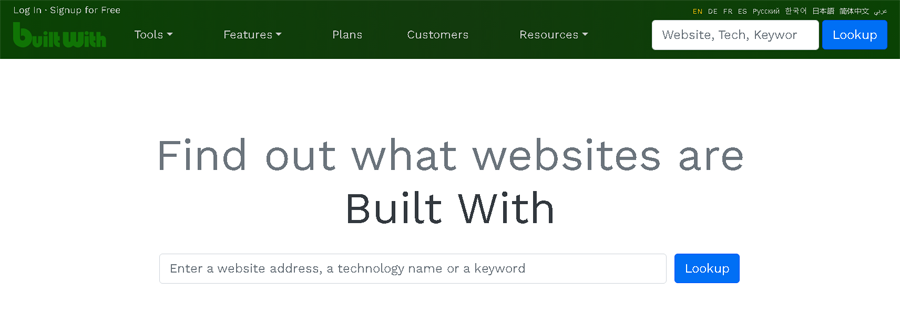
BuiltWith is a powerful tool for analyzing competitors’ online advertising tactics, offering detailed insights into the technologies and strategies they employ for PPC ads. It scrutinizes websites to identify their technologies, frameworks, and advertising platforms.
BuiltWith reveals the tracking and analytics tools competitors use for their PPC campaigns, shedding light on their targeting and optimization strategies. This tool empowers businesses to understand competitors’ online activities, enabling them to enhance their own advertising and make informed decisions.
SurferSEO
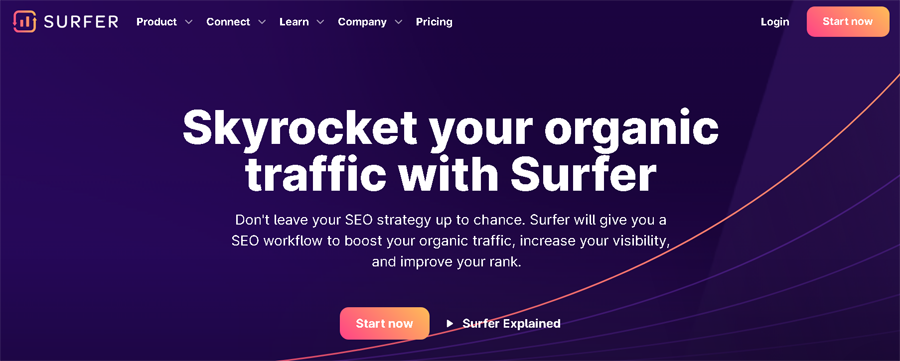
SurferSEO assists in analyzing competitors’ online ads and strategies, providing extensive information about their keyword usage, ad content, and landing page optimizations.
It compares your pages to those already ranking and uses data to suggest content improvements. SurferSEO helps businesses understand their competitors’ content and SEO strategies, leading to enhanced advertising efforts.
By learning from competitors’ campaigns, SurferSEO enables businesses to optimize their ads with effective keywords and strategies, standing out in the competitive world of paid advertising.
BuzzSumo
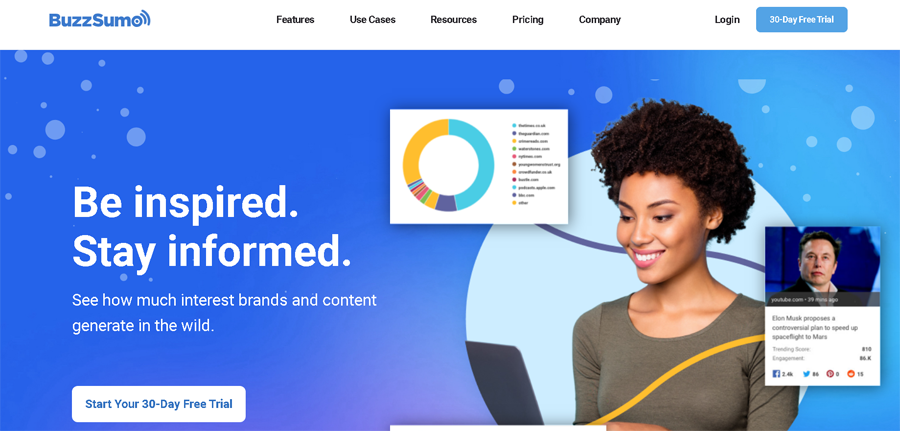
BuzzSumo, known for content analysis, is also valuable for PPC competitor analysis. It aids businesses in discovering top-performing content, identifying trending topics, and understanding competitors’ strategies. BuzzSumo enhances PPC campaigns by analyzing competitor ads and audience engagement.
By identifying popular content in a specific niche, businesses can create more compelling ads and improve their website pages. BuzzSumo allows advertisers to assess the effectiveness of competitors’ ads, guiding smarter advertising decisions and strategy improvements.
Google Ads Auction Insights
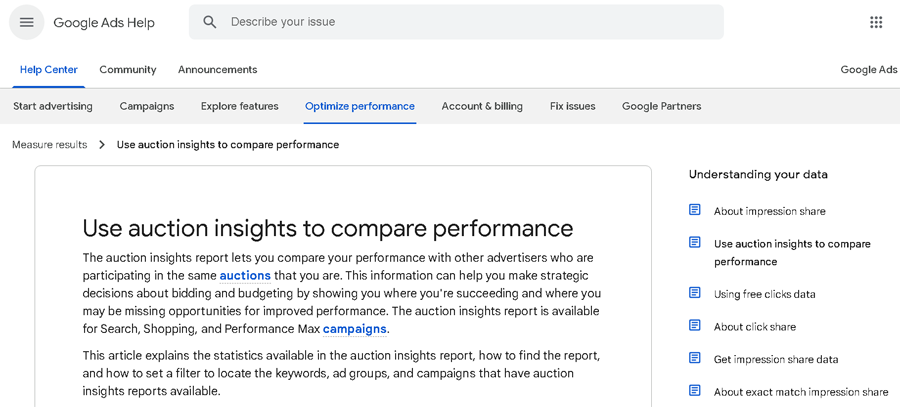
Google Ads Auction Insights is an invaluable tool for analyzing your competition within Google Ads. It enables you to assess your ad performance relative to other advertisers. The tool provides crucial data on how a business’s ads are performing in comparison to others in the same auctions.
Auction Insights reveal the frequency of your ad’s appearance compared to your competitors’. It also indicates your ad’s typical ranking relative to theirs. This insight is instrumental in understanding competitors’ strategies. Advertisers can identify which companies are bidding on the same keywords and gauge the effectiveness of their ads.
This tool aids businesses in refining their bidding strategies and better-targeting keywords in Google Ads auctions, keeping them competitive in the dynamic Google Ads marketplace. We discussed this tool in detail earlier in this post.
What to Find When Analyzing Your Competitors?
Utilizing tools to analyze your PPC competitors can provide insights into their campaign strategies. Focus areas should include keywords and ad copy.
Learning from competitors can spark new ideas. You may be able to gauge their monthly spending and which social media platforms they utilize. Keeping an open mind and adopting different perspectives are crucial in this research.
Gather information and contemplate how to leverage it. Some insights are apparent, while others require deeper analysis. Regardless, ensure you collect comprehensive data for potential future use. Valuable insights from competitors include:
- Keywords and offers
- Does your budget match others in the industry?
- Competitors spending different amounts of money
- Who are you competing with right now?
- Possible threats
- Keywords that you can buy that your competition does not have
- Come up with new ideas for your ads and CTAs
Bear in mind that these tools don’t provide a direct measure of your competitors’ ad success. Therefore, avoid making drastic changes to your campaigns solely based on different approaches taken by your competitors.
Sometimes, the most valuable lesson is learning what not to do from your competitors’ mistakes. Let their campaigns inspire innovative and creative ideas for your own ads.
After Analyzing the Competition: Look Closely at the Numbers
Identifying weaknesses in your competitors’ strategies can offer opportunities for you to excel.
Review Landing Pages
Begin by cataloging landing pages of companies similar to yours. Evaluate their website speed – is it faster or slower than yours? A swift website is crucial for outperforming competitors. Slow response times may drive customers away.
Next, examine their offers, call-to-actions (CTAs), and benefits. How do you stack up against them? Are there areas for improvement? Pay close attention to potential enhancements on your homepage. Consider these questions when evaluating competitors’ landing pages for your pay-per-click ads:
- Is it easy for people to use?
- How fast is the website?
- How does your request for action compare to theirs?
- Is your offer as good as theirs?
- Do your best qualities and advantages compare well to theirs?
- Should you include important features or benefits?
- Overall, how is your page? Do you need any changes?
Also, assess if the ad leading to the landing page aligns with its content. Are the essential keywords present and consistent with the content? Evaluate carefully, considering how Google might rate it.
Seek out examples and styles that can enhance your own landing pages. Analyzing competitors’ websites is vital to refine your strategy. Pay attention to their methods of engagement, customer attraction, and user experience. Each aspect can inform and improve your online advertising strategy.
Remember, when investing in search engine ads, it’s not just about the ads and chosen keywords; the landing pages are equally significant. Experiment with different elements and ideas from your top competitors to enhance the effectiveness of your own landing pages.
Analyze Ad Copy
Examining your competitors’ ads, both past and present, can provide insights into their advertising strategies. An ad is the first representation of a brand to potential customers. Analyzing their content, offerings, and promises helps them understand their customer acquisition tactics.
Reviewing successful ad messages can highlight what you might be missing. They may include details on pricing, features, availability, or special offers. What aspects grabbed your attention? How can you differentiate your ad after observing theirs? Focus on elements like:
- Titles
- Call to actions
- Discounts
- Pricing
- Features
- Offers
However, don’t limit your analysis to the ad copy alone. Also, search for patterns in the ad history. Do trends shift seasonally? Examine ad histories to identify peak months.
Understanding the busiest business periods and fluctuating keyword costs can aid in managing website traffic and ad spending. For example, consider running promotions during slower periods to compensate for increased advertising costs during peak times.
By observing your competitors’ ads, you can discern their challenges or highlights. This insight assists in defining your unique selling propositions in contrast to your competitors.
Let your competitors’ ads inspire your creative approach. Enhancing the appeal of your ads can drive more traffic to your website. Remember to examine ad histories for comprehensive insights, not just current ads. This data can be instrumental in refining your strategy.
Keyword Gaps and Competition
You’ve researched keywords, but have you explored unconventional ideas? Tools can reveal detailed information about your competitors’ keyword strategies. Discover their target areas and budget allocations, as well as the duration of their bidding on these keywords.
Once you understand their key terms, you can make more informed decisions for your strategy. You might choose to withdraw from certain high-cost keywords or increase bids on affordable ones.
Identifying keyword gaps, where competitors aren’t bidding, presents a lucrative opportunity. Investing in these areas can attract more visitors to your site without excessive costs.
However, be vigilant, as competitors may mimic your approach. Exploiting keyword gaps is a strategic way to increase low-cost traffic. Monitor the search volume; it may not always be sufficient to significantly impact your visibility.
Wrapping Up
The primary goal of conducting a PPC competitor analysis is to identify your rivals and devise strategies to enhance your campaigns. While it’s not advisable to merely replicate what others are doing, understanding the tactics of brands vying for the same audience can provide valuable insights. You can adapt some of their successful methods in a unique way to benefit your campaigns.
It’s crucial not to depend solely on the data from tools, as they don’t have direct access to your competitors’ accounts. These tools aggregate information from search engines to offer a snapshot of the paid digital advertising landscape. By comprehending your competition’s strategies, you can strive to outperform them on search engine results pages.
FAQs
How does my business benefit from PPC competitor analysis?
Analyzing our competitors’ PPC tactics helps us understand their ad placements, keyword usage, and messaging. This insight is invaluable for refining our advertising strategies. Knowledge about the competition can enhance ad effectiveness, target the right audience, and maintain a competitive edge.
Can I perform PPC competitor analysis without specialized tools?
While you can manually monitor some aspects, specialized tools provide deeper insights, automation, and time-saving benefits.
What numbers should I pay attention to when looking at my competitors’ PPC ads?
Key metrics include ad impression share, ad positioning, overlap rate with other ads, and performance indicators. These metrics offer a comparative view of your ads’ performance, guiding necessary adjustments for improvement.
How frequently should I analyze my competitors’ PPC?
Regular monitoring of your competitors’ PPC activities is advisable, particularly before launching new campaigns or implementing significant changes. Frequent reviews ensure your strategies remain effective in the evolving competitive landscape.
